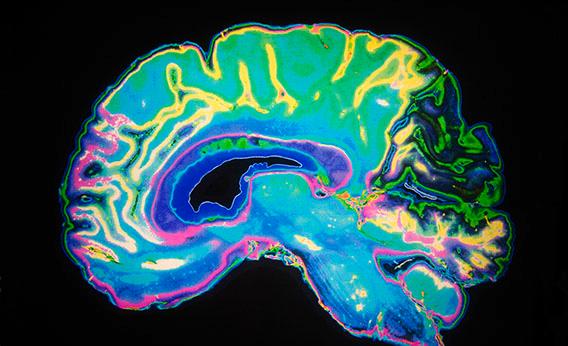From the IEET (
Institute for Ethics and Emerging Technology), James Hughes reveals the results of a recent poll of IEET readers, over 400 of whom completed the survey (including me), and around 48% identified as technoprogressives (among other labels - we could choose more than one).
Here is one of the more interesting demographic stat collections:
Demographically, as we usually find in surveys of the transhumanist and Left movements, the technoprogressives are overwhelmingly (91%) white/European and (91%) male, although not as straight as the population at large – 17% are GLBT. Fully half (50%) have a masters, doctorate or professional degree, while another third (34%) have a bachelors degree. Most (60%) identify as atheists or agnostic, but there are technoprogressives among the respondents with every religious persuasion we asked about – "spiritual" (17%), Buddhist (13%), Unitarian Universalist (6%), Pantheist (4%), Catholic (4%), Protestant (4%), Pagan (3%), LDS (2%), Jewish (2%), Muslim (1%), and Hindu (1%).
Interesting to me, I identify as a technoprogressive, but I do not embrace many of the ideas that seem commonplace to this crowd, such as
uploading consciousness into a computer to escape death (not even nearly possible, now and maybe ever),
cryogenics (why the hell . . . ?),
near immortality (who the hell wants to be alive for hundreds of years? have we learned nothing from vampire shows?),
allowing parents to clone children, or to
pick their child's basic biological traits (there goes genetic diversity), and several others.
Still, this is an interesting read . . . .

J. Hughes
Ethical Technology
Posted: Jul 14, 2013
When we started promoting the term “technoprogressive” as the IEET’s ideological position back in 2006 it helped us move beyond being the left wing of transhumanism to being part of a broader, deeper and older political current with roots in the Enlightenment. Our recent survey of the IEET audience helps us continue to flesh out what kinds of people are responding to the technoprogressive political project.
More than 400 of you took the time to respond to the IEET survey, and half (48%) of you identified as "technoprogressive." (In later analyses of the survey I'll dig into the opinions of all the respondents, including those who didn't identify with the term "technoprogressive.")
"Technoprogressive" was one of the multiple political labels the survey provided, and most of you chose more than one to describe yourself. Of those almost all of the technoprogressives also chose political labels associated with left-wing politics, ranging from "liberal," "progressive," "anti-racist," and "Green," to various shades of radical left politics such as "libertarian socialist" and "anarchist." Surprisingly however – since the technoprogressive label was originally defined as a critique of libertarian transhumanism - some "technoprogressives" also identified as "libertarians," and a quarter (26%) of you identified as "upwingers or advocates of a future political system," as well as moderates, Euro-Liberals and Christian Democrats, and even conservatives.
Political Identities of Technoprogressives in the 2013 IEET Survey
Liberal/Social Democratic
|
69%
| |
Libertarian Right
|
14%
|
Progressive
|
54%
| |
Libertarian
|
13%
|
Democrat
|
25%
| |
Anarcho-capitalist
|
3%
|
US-style "liberal"
|
22%
| |
Minarchist
|
3%
|
Social democrat
|
25%
| |
Randian/Objectivist
|
1%
|
Democratic socialist
|
15%
| | | |
Market socialist
|
8%
| |
Other Identities
|
|
| | |
Upwinger/advocate of a future political system
|
26%
|
New Left
|
64%
| |
Moderate
|
22%
|
Anti-racist
|
42%
| |
Other
|
11%
|
Green
|
35%
| |
European Liberal
|
8%
|
Feminist
|
27%
| |
Conservative
|
2%
|
Eco-socialist
|
14%
| |
Religious socialist
|
2%
|
Socialist feminist
|
8%
| |
Christian Democrat
|
2%
|
| | |
Far right
|
0%
|
Radical Left
|
34%
| | | |
Libertarian socialist
|
15%
| |
Not political
|
5%
|
Radical
|
13%
| | | |
Socialist internationalist
|
10%
| | | |
Anarchist
|
8%
| | | |
Revolutionary socialist
|
5%
| | | |
Communist
|
4%
| | | |
Anarcho-syndicalist
|
4%
| | | |
Marxist-Leninist
|
1%
| | | |
Clearly, the technoprogressive label, like the term "progressive," has had a broader appeal than just to people on the Left.
We also asked about your support for a variety of movements. Among the self-described "technoprogressives" support for "transhumanism" garnered the most enthusiasm, with about two thirds (65%) of technoprogressives saying they strongly supported it. There were however some technoprogressives who were hostile or indifferent to the transhumanist movement. There was also almost complete support (above 80% on support or strongly support) among the technoprogressives for abortion rights, environmentalism, dignity in dying, disability rights, secular humanism and drug legalization. After these movements though there was a more mixed opinion about "animal rights" (70% support), "singularitarianism" (63% support), "great ape rights" (62%), trade unions (56%), vegetarianism (48%) and world federalism (46%).
Among the agree-disagree statements there were nine statements that stood out as having far more support from technoprogressives than from those who did not identify as technoprogressives. Technoprogressives were more supportive of uploading, cryonics, personhood rights for robots, cloning, radical life extension, designer babies, uplifting, GMO crops and – not surprisingly – technoprogress.
|
Percent Agreeing
| |
|
TPs
|
Non TPs
|
Difference
|
I would have my mind copied to computers if it was the only way I could continue as a conscious person.
|
73%
|
43%
|
30%
|
I would consider being frozen and re-animated later if it was the only way I could continue living.
|
68%
|
41%
|
27%
|
Robots that think and feel like human beings, and aren't a threat to human beings, should be granted human rights.
|
81%
|
54%
|
27%
|
Parents should be able to have children through cloning once the technology is safe.
|
74%
|
47%
|
27%
|
It would be a good thing if people could live in good health for hundreds of years or longer.
|
88%
|
62%
|
26%
|
Parents should be able to choose the sex, intelligence and other characteristics of their children.
|
61%
|
37%
|
24%
|
It would be ethical to genetically modify apes and dolphins to be able to think and communicate more like human beings.
|
49%
|
30%
|
19%
|
Genetically-modified crops present an opportunity to improve agriculture and nutrition, and should be actively developed.
|
73%
|
55%
|
18%
|
Through science and reason, human progress is limitless.
|
75%
|
57%
|
18%
|

Demographically, as we usually find in surveys of the transhumanist and Left movements, the technoprogressives are overwhelmingly (91%) white/European and (91%) male, although not as straight as the population at large – 17% are GLBT. Fully half (50%) have a masters, doctorate or professional degree, while another third (34%) have a bachelors degree. Most (60%) identify as atheists or agnostic, but there are technoprogressives among the respondents with every religious persuasion we asked about – "spiritual" (17%), Buddhist (13%), Unitarian Universalist (6%), Pantheist (4%), Catholic (4%), Protestant (4%), Pagan (3%), LDS (2%), Jewish (2%), Muslim (1%), and Hindu (1%).
Overall, the survey results show that our small political tendency has attracted a very diverse constituency of very well-educated people who are mostly secular left-leaning transhumanists, but who include religious people, non-transhumanists and people not on the Left. As we knew we have a lot of work to do to broaden our appeal beyond the male white/European base, which will happen naturally as technoprogressivism continues to evolve beyond its narrow subcultural community to build alliances with the diverse movements that it has strong resonances with. In addition to organizations like Humanity+, which a third (32%) of the technoprogressives belonged to, and support for transhumanist-identified projects like SENS (18%), technoprogressives also participate in political parties (27%), religious denominations (15%), political nonprofit groups and professional associations. Raising the flag for a technoprogressive point of view in these myriad arenas is the work ahead of us.
~ James Hughes Ph.D., the Executive Director of the Institute for Ethics and Emerging Technologies, is a bioethicist and sociologist at Trinity College in Hartford Connecticut USA, where he teaches health policy and serves as Director of Institutional Research and Planning. He is author of Citizen Cyborg and is working on a second book tentatively titled Cyborg Buddha. He produces a syndicated weekly radio program, Changesurfer Radio. (Subscribe to the J. Hughes RSS feed)
















